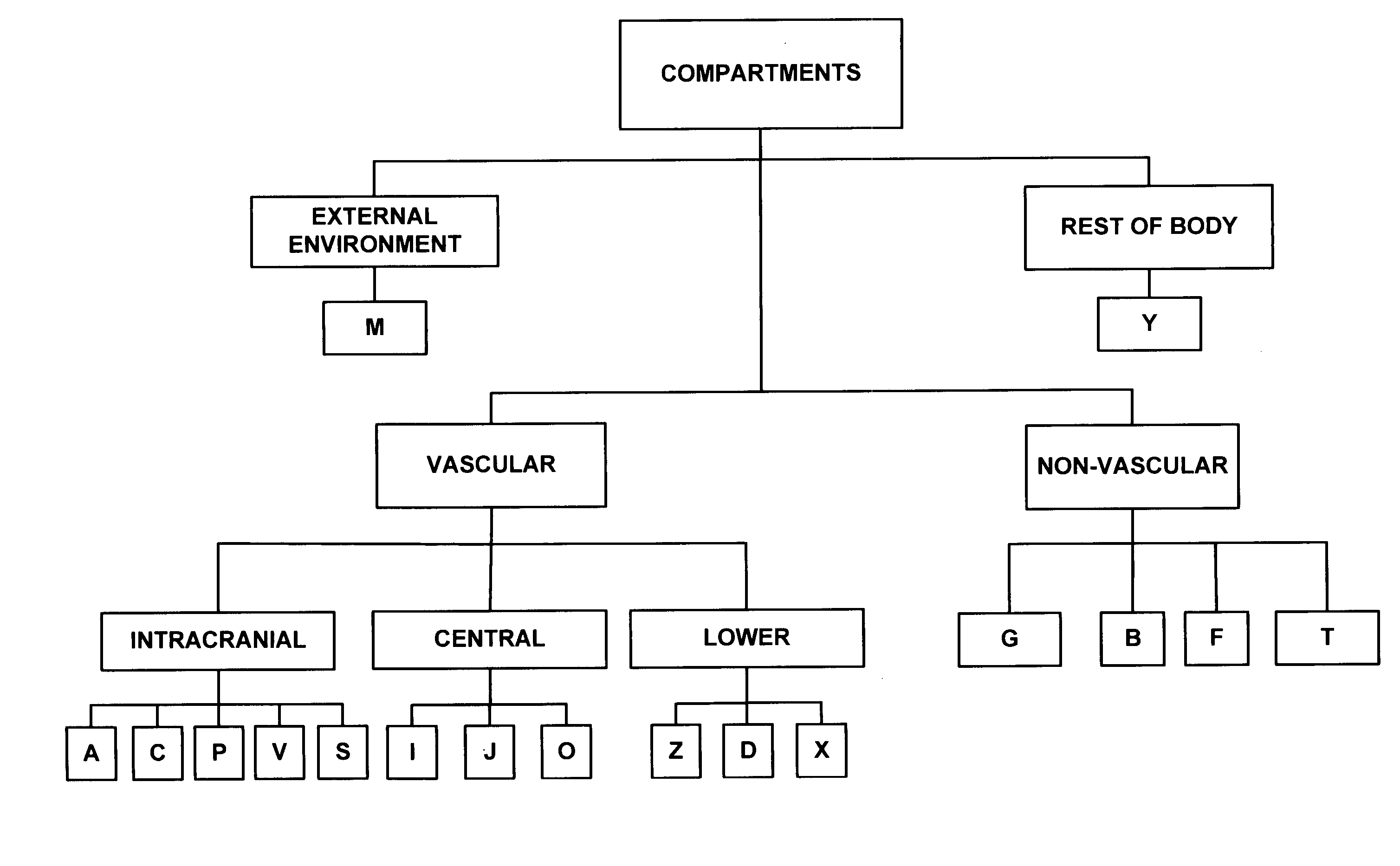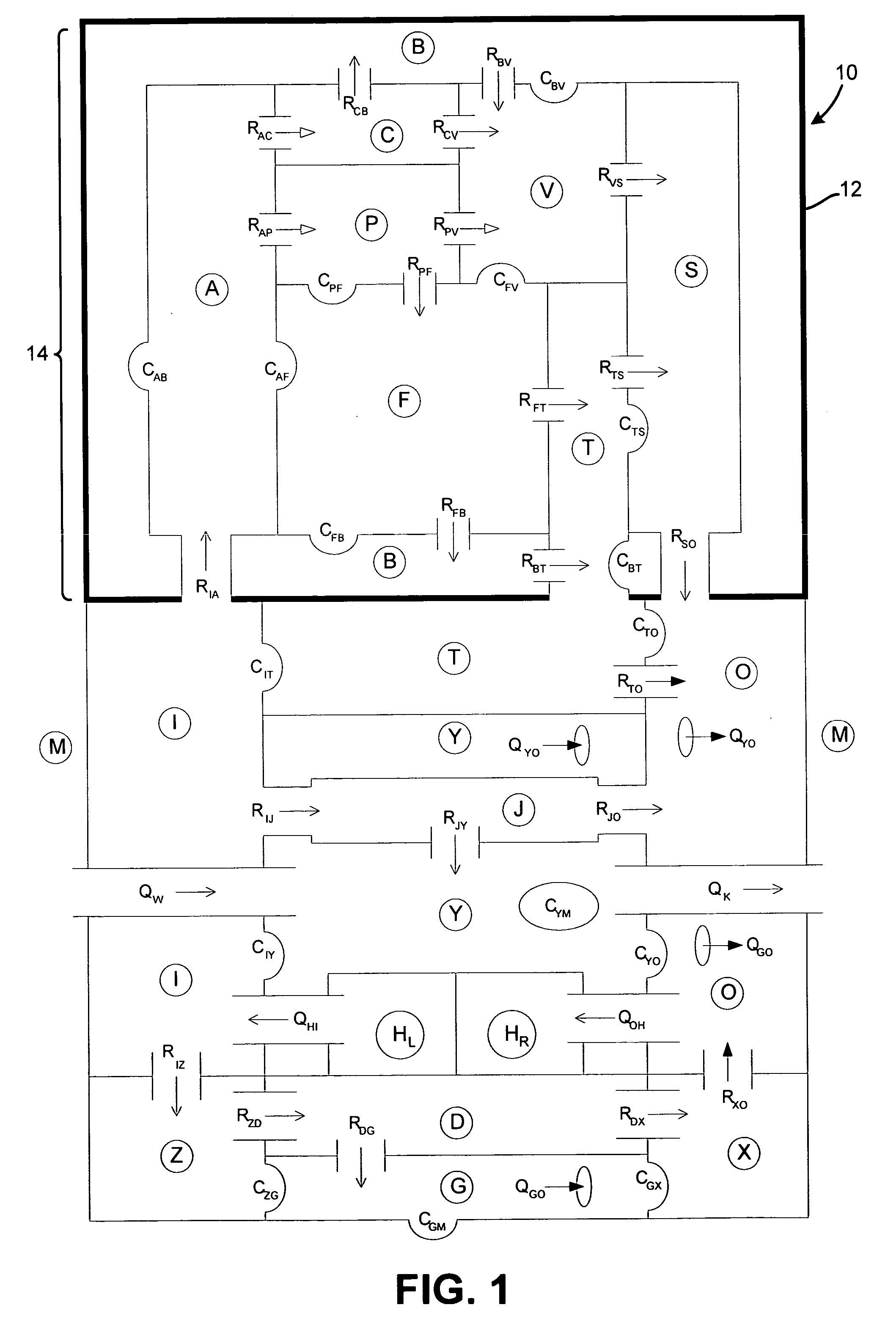Whole-body mathematical model for simulating intracranial pressure dynamics
a mathematical model and intracranial pressure technology, applied in education models, analogue and hybrid computing, instruments, etc., can solve the problems of inability of closed-system models to incorporate the influence of important extracranial factors on intracranial pressure dynamics, unsuitable for studying multiple parameter changes, and the effect of interconnected subsystems on each other, and one of the main limitations of lumped-parameter approaches
- Summary
- Abstract
- Description
- Claims
- Application Information
AI Technical Summary
Problems solved by technology
Method used
Image
Examples
Embodiment Construction
[0029]The present invention is directed to a whole-body mathematical model for simulating intracranial pressure dynamics. Examples of the disclosed invention are depicted in FIGS. 1–11, although it should be understood that the present invention is not limited to this (or any other) particular embodiment, but rather is intended to cover models and systems that fairly fall within the broad scope of the appended claims.
[0030]As described in U.S. Provisional Patent Serial No. 60 / 409,551, which is incorporated by reference as if disclosed herein in its entirety, the model of the present invention revokes the Kellie-Monro Doctrine by consistently embedding the intracranial system within whole-body physiology. In one embodiment, the model of the present invention includes 17 interacting compartments, of which nine lie entirely outside of the intracranial vault. Two distinct compartments are defined to distinguish ventricular from extraventricular CSF. The vasculature of the intracranial s...
PUM
 Login to View More
Login to View More Abstract
Description
Claims
Application Information
 Login to View More
Login to View More - R&D
- Intellectual Property
- Life Sciences
- Materials
- Tech Scout
- Unparalleled Data Quality
- Higher Quality Content
- 60% Fewer Hallucinations
Browse by: Latest US Patents, China's latest patents, Technical Efficacy Thesaurus, Application Domain, Technology Topic, Popular Technical Reports.
© 2025 PatSnap. All rights reserved.Legal|Privacy policy|Modern Slavery Act Transparency Statement|Sitemap|About US| Contact US: help@patsnap.com



